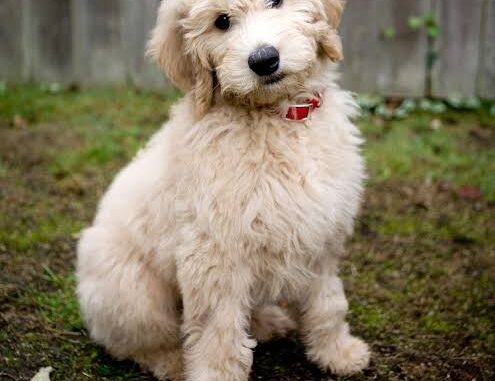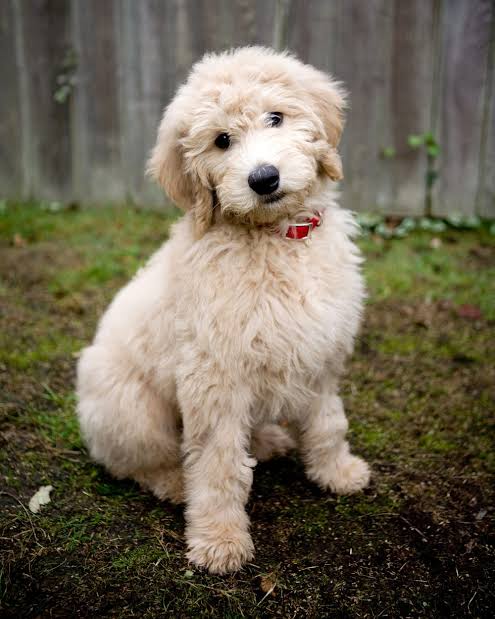
Best Hypoallergenic Dog Breeds for Allergy Sufferers: For millions of people around the world, the companionship of a dog is one of life’s greatest joys. However, for allergy sufferers, this joy often comes with sneezing, watery eyes, and other unpleasant symptoms. Thankfully, there are certain dog breeds commonly labeled as “hypoallergenic,” meaning they are less likely to trigger allergic reactions. While no dog is 100% hypoallergenic, some breeds produce fewer allergens, making them more suitable for people with sensitivities.

This guide delves deep into the best hypoallergenic dog breeds, what makes a dog more allergy-friendly, and how you can live happily and healthily with a dog even if you have allergies.
What Causes Dog Allergies?
Before choosing a breed, it’s essential to understand what triggers the allergic reaction. People often think it’s a dog’s fur, but the primary allergens are proteins found in a dog’s saliva, urine, and dander (dead skin cells). When dogs shed their hair, they also shed these protein-laden skin particles.
Dogs that shed less or have non-shedding coats tend to release fewer allergens into the environment. Some breeds also produce lower levels of the proteins that cause allergic reactions.
Top Hypoallergenic Dog Breeds
Here are some of the most popular and effective hypoallergenic dog breeds that allergy sufferers may consider:
1. Poodle (Toy, Miniature, Standard)
- Why they’re great: Poodles are known for their intelligence and highly trainable nature. Their tight, curly coat traps dander, preventing it from becoming airborne.
- Grooming: Requires regular brushing and professional grooming to prevent matting.
- Bonus: Comes in various sizes to suit different living spaces.
2. Bichon Frise
- Why they’re great: The Bichon Frise has a soft, curly coat that doesn’t shed much. They also produce less dander.
- Grooming: High maintenance; needs frequent grooming to maintain their coat.
- Temperament: Cheerful, affectionate, and playful—great with families.
3. Maltese
- Why they’re great: Maltese dogs have a silky single coat that doesn’t shed much.
- Grooming: Daily brushing is needed to avoid tangles and mats.
- Temperament: Lively and affectionate, ideal for small homes or apartments.
4. Portuguese Water Dog
- Why they’re great: This breed has a dense, curly coat and sheds very little.
- Grooming: Regular grooming needed to prevent mats and control dander.
- Bonus: Very active and loves water—great for outdoorsy families.
5. Soft-Coated Wheaten Terrier
- Why they’re great: They have a single-layer, silky coat that doesn’t shed much.
- Grooming: Needs regular brushing to prevent matting.
- Temperament: Friendly, spirited, and loyal.
6. Schnauzer (Miniature, Standard, Giant)
- Why they’re great: All three sizes have low-shedding coats that trap dander.
- Grooming: Needs regular clipping and brushing.
- Temperament: Energetic and protective, often used as watchdogs.
7. Lagotto Romagnolo
- Why they’re great: Known as truffle hunters, they have a wool-like, non-shedding coat.
- Grooming: Requires consistent grooming.
- Temperament: Eager, affectionate, and very trainable.
8. Irish Water Spaniel
- Why they’re great: This breed sports tight curls and is one of the least shedding spaniels.
- Grooming: Weekly brushing and trimming required.
- Temperament: Active, intelligent, and loves water.
9. Basenji
- Why they’re great: Known as the “barkless dog,” Basenjis are very clean and shed minimally.
- Grooming: Low maintenance—occasional brushing is enough.
- Temperament: Independent and cat-like.
10. Chinese Crested
- Why they’re great: Comes in hairless and powderpuff varieties. Hairless version has very little hair, so minimal dander is trapped.
- Grooming: Hairless needs skin care; powderpuff needs brushing.
- Temperament: Affectionate and social.
How to Manage Dog Allergies
Even with a hypoallergenic breed, complete allergy avoidance is unlikely. However, the following strategies can help minimize exposure and symptoms:
1. Groom Frequently
- Brush and bathe your dog regularly to remove loose hair and dander.
- Use allergy-specific shampoos that reduce allergens.
2. Clean Your Environment
- Use HEPA filters in vacuums and air purifiers.
- Wash dog bedding, toys, and blankets frequently.
- Avoid carpeting if possible; opt for hardwood or tile floors.
3. Limit Dog Access
- Keep dogs out of the bedroom and off furniture.
- Create dog-free zones in your home.
4. Wash Hands Often
- After petting or playing with your dog, wash hands to avoid transferring allergens to your face or eyes.
5. Consult an Allergist
- Discuss options like allergy shots (immunotherapy), antihistamines, or other treatments that can help you tolerate exposure better.
READ ALSO: How to Create a Pet Emergency Kit
Choosing the Right Dog for You
When selecting a dog breed as an allergy sufferer, consider the following:
- Allergy Severity: People react differently to various breeds. Spend time with the breed before bringing a dog home.
- Lifestyle Fit: Some hypoallergenic dogs are high-energy and require lots of exercise. Choose a breed that suits your daily routine.
- Size of Living Space: Smaller breeds are better for apartments; larger hypoallergenic breeds need space to move.
Other Considerations
- Mixed Breeds: Many “designer” dogs like Labradoodles, Goldendoodles, and Schnoodles are bred to be hypoallergenic. However, not all inherit low-shedding traits. Meet the dog and see how you react before committing.
- Shelter Dogs: Don’t rule out adoption. Some mixed breeds in shelters have hypoallergenic coats. Ask about the dog’s shedding level and spend time with them first.
FAQs
Are there truly hypoallergenic dogs?
No dog is completely hypoallergenic. However, certain breeds produce fewer allergens or shed less, reducing exposure for allergy sufferers.
What causes dog allergies in humans?
The main allergens are proteins found in a dog’s saliva, urine, and dander (dead skin). These can become airborne and trigger allergic reactions.
Do short-haired dogs cause fewer allergies?
Not necessarily. Short-haired dogs can shed more dander. It’s more about how much the dog sheds and how much dander they produce, not hair length.
Are mixed breeds like Labradoodles always hypoallergenic?
No. While bred from Poodles to inherit hypoallergenic traits, not all Labradoodles or other hybrids are low-allergen. It depends on the individual dog’s genetics.
Can allergy sufferers live with dogs successfully?
Yes, many allergy sufferers live happily with dogs by choosing the right breed and implementing good allergy management practices at home.
Do hypoallergenic dogs require more grooming?
Often, yes. Many hypoallergenic dogs need regular brushing, bathing, and trimming to maintain their coats and reduce allergens.
Is there a test to know if I’m allergic to a specific dog?
You can undergo allergy testing (skin or blood tests) or spend time with a specific dog breed to see if symptoms arise.
What are the best dogs for people with mild allergies?
Poodles, Bichon Frise, and Maltese are great starting points due to their low shedding and manageable grooming needs.
Do hypoallergenic dogs smell less?
Some do. Dogs that don’t shed much and are groomed regularly may smell less. However, odor varies more by individual dog and cleanliness than breed.
Should I avoid all dogs if I have asthma?
Not necessarily. Consult your doctor. Some asthma sufferers can live comfortably with hypoallergenic breeds, especially with environmental controls and medical treatment.
Leave a Reply
You must be logged in to post a comment.